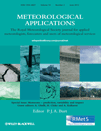
METEOROLOGICAL APPLICATIONS
Scope & Guideline
Connecting Experts to Enhance Weather Understanding
Introduction
Aims and Scopes
- Application of Advanced Forecasting Techniques:
The journal emphasizes the development and application of sophisticated forecasting methods, including machine learning and statistical models, to enhance the accuracy and reliability of weather predictions. - Integration of Remote Sensing and Ground Observations:
Research often involves comparative analyses between remote sensing data and ground-based observations to improve our understanding of meteorological phenomena and validate predictive models. - Focus on Climate Change and Environmental Impact:
There is a strong emphasis on studies that explore the impacts of climate change on weather patterns, agricultural productivity, and air quality, highlighting the journal's commitment to addressing global environmental challenges. - Exploration of Urban Meteorology:
The journal frequently publishes research on urban meteorological phenomena, including the urban heat island effect, air quality monitoring, and the implications of urbanization on weather and climate. - Innovative Uses of Technology in Meteorology:
Research topics often include the use of novel technologies such as IoT sensors, satellite data, and high-performance computing to enhance meteorological research and applications.
Trending and Emerging
- Machine Learning and AI in Meteorology:
There is a growing trend towards the use of machine learning and artificial intelligence techniques to improve weather forecasting accuracy and efficiency, indicating a shift in methodological approaches within the field. - Environmental and Climate Change Impacts:
Research focusing on the impacts of climate change on weather extremes, agricultural productivity, and natural disasters is gaining momentum, highlighting the urgency of addressing climate-related challenges. - Air Quality and Pollution Studies:
An increasing number of studies are dedicated to understanding air quality dynamics, particularly in urban settings, reflecting heightened awareness of public health issues related to pollution. - Interdisciplinary Approaches:
Emerging research often incorporates interdisciplinary methods, blending meteorology with fields such as ecology, health, and technology, which enhances the relevance and applicability of findings. - Real-Time Data Utilization:
The use of real-time data from IoT devices and remote sensing technologies for immediate weather applications is on the rise, indicating a shift towards practical, real-world applications of meteorological research.
Declining or Waning
- Traditional Statistical Methods:
There appears to be a decline in the publication of studies solely relying on traditional statistical methods for weather prediction, as researchers increasingly adopt more advanced machine learning and hybrid approaches. - General Climate Studies:
Research that broadly examines climate trends without specific applications or implications has decreased, suggesting a shift towards more targeted studies that address specific meteorological challenges or applications. - Focus on Historical Weather Patterns:
There has been a noticeable reduction in studies focused exclusively on historical weather patterns and their analysis, indicating a potential shift towards more future-oriented and predictive research. - Local Case Studies without Broader Implications:
Papers that provide localized case studies without implications for wider application or relevance have become less common, reflecting a trend towards research that aims for broader applicability and impact.
Similar Journals

METEOROLOGY AND ATMOSPHERIC PHYSICS
Elevating Knowledge in Meteorological SciencesMETEOROLOGY AND ATMOSPHERIC PHYSICS is a premier journal published by SPRINGER WIEN, dedicated to advancing the study of atmospheric phenomena and weather-related sciences. With an ISSN of 0177-7971 and an E-ISSN of 1436-5065, the journal has established itself as an important contributor in the field, particularly noted for its contributions in atmospheric science, holding a Q3 ranking in the 2023 category quartiles. Covering a wide array of topics from meteorological modeling to the physics of the atmosphere, it serves researchers, professionals, and students alike, facilitating the dissemination of significant findings and innovative research. The journal’s acceptance of articles until 2024 encourages a continuous influx of knowledge, and despite its lack of Open Access, it plays a crucial role in enriching the academic landscape for those engaged in Earth and planetary sciences, holding a commendable rank of 78 out of 148 in Scopus. Located in the scenic city of Vienna, Austria, the journal is positioned to harness the vibrancy of the academic community, providing a platform for valuable insights that can drive forward the field of meteorology and atmospheric physics.
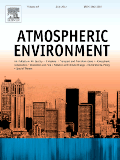
ATMOSPHERIC ENVIRONMENT
Advancing atmospheric science for a sustainable future.ATMOSPHERIC ENVIRONMENT is a premier journal dedicated to advancing the field of atmospheric science and environmental studies, published by Pergamon-Elsevier Science Ltd in the United Kingdom. With an impressive impact factor and recent rankings placing it in the Q2 quartile for Atmospheric Science and Q1 for miscellaneous Environmental Science, it stands as a leading source of high-quality research articles that bridge the gap between atmospheric phenomena and environmental issues. The journal, which has been disseminating significant findings since its inception in 1972, emphasizes an interdisciplinary approach, inviting contributions that address the pivotal challenges facing our atmosphere today. Although it does not currently offer open access options, the journal remains accessible through various academic platforms, ensuring that the latest research reaches its vast audience of researchers, professionals, and students who are striving to deepen their understanding of atmospheric processes. With a robust scope that encompasses a range of topics from climate change to air quality management, ATMOSPHERIC ENVIRONMENT is essential reading for anyone committed to fostering sustainable environmental practices and innovative scientific research.
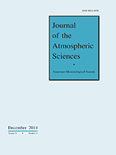
JOURNAL OF THE ATMOSPHERIC SCIENCES
Transforming Knowledge into Atmospheric UnderstandingJOURNAL OF THE ATMOSPHERIC SCIENCES, published by the American Meteorological Society, stands as a premier resource for the latest research in atmospheric sciences. With an impressive impact factor and a Q1 ranking in the Atmospheric Science category for 2023, this journal is recognized for its rigorous peer-reviewed articles that contribute to the understanding and advancement of weather, climate, and dynamics of the atmosphere. Established in 1969, the journal has maintained high academic standards and delivers valuable insights spanning over five decades, thus catering to an audience of researchers, professionals, and students alike. Although it does not offer open-access options, it provides critical access through various institutional subscriptions, ensuring that significant research findings are disseminated widely within the scientific community. The journal's address is located at 45 Beacon St, Boston, MA 02108-3693, United States, and it accepts submissions and articles until 2024, continuing its legacy of excellence in atmospheric research.
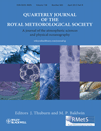
QUARTERLY JOURNAL OF THE ROYAL METEOROLOGICAL SOCIETY
Elevating meteorological knowledge since 1873.The Quarterly Journal of the Royal Meteorological Society, published by Wiley, stands as a prestigious platform in the field of Atmospheric Science, with a commendable impact reflected in its Q1 quartile ranking and a notable Scopus rank of 4th out of 148, placing it in the 97th percentile among its peers. With origins tracing back to 1873, this journal has established itself as a cornerstone for disseminating high-quality research, engaging articles, and innovative methodologies that advance our understanding of meteorological phenomena. Although it is not an open-access journal, the rigorous peer-review process ensures that only the most significant contributions are published, making it essential reading for researchers, professionals, and students dedicated to atmospheric and planetary sciences. For those interested in cutting-edge findings and comprehensive reviews, the Quarterly Journal of the Royal Meteorological Society is an invaluable resource in enhancing scientific knowledge and collaboration in this dynamic and evolving field.

ATMOSFERA
Fostering Collaboration in Atmospheric InquiryATMOSFERA is a prestigious journal published by CENTRO CIENCIAS ATMOSFERA UNAM, dedicated to advancing the field of Atmospheric Science. With an ISSN of 0187-6236 and an E-ISSN of 2395-8812, this bilingual journal has been a vital resource for researchers since its inception in 1988. Located in Mexico City, the journal serves as a platform for high-quality original research, reviews, and case studies that explore various atmospheric phenomena, climate issues, and environmental challenges. Although currently categorized in the Q4 quartile of Atmospheric Science, ATMOSFERA aims to contribute to the growing body of knowledge in the field and improve its ranking over the next few years, emphasizing rigorous scientific inquiry and fostering collaboration among scholars. Its accessibility and commitment to open communication make it an essential reference for professionals and students striving to understand and address complex atmospheric dynamics.
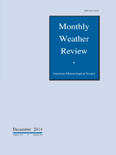
MONTHLY WEATHER REVIEW
Connecting Researchers through Meteorological DiscoveriesMONTHLY WEATHER REVIEW, published by the American Meteorological Society, is a leading journal in the field of atmospheric science, recognized for its rigorous peer-reviewed articles that contribute significantly to the understanding of weather patterns and climate systems. With an impressive Q1 ranking in the 2023 category quartiles and a strong standing (#41 out of 148) in the Earth and Planetary Sciences Scopus rankings, the journal serves as an essential resource for researchers, professionals, and students alike. Although it does not currently offer open access, its comprehensive coverage of meteorological research spanning from 1960 to 2024 makes it invaluable for those seeking to stay at the forefront of developments in weather analysis and prediction. Situated in Boston, Massachusetts, this journal not only showcases pioneering research but also emphasizes the importance of collaborative efforts in the meteorological community, ultimately contributing to advancements in our understanding of atmospheric phenomena.
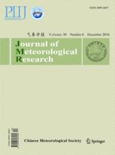
Journal of Meteorological Research
Unlocking the Secrets of Our Changing Climate.The Journal of Meteorological Research, published by SPRINGER HEIDELBERG, stands as a vital resource in the fields of Atmospheric Science and Ocean Engineering, boasting an impressive impact factor that reflects its scholarly significance. With its ISSN 2095-6037 and E-ISSN 2198-0934, the journal offers an open access platform, fostering accessibility and dissemination of cutting-edge research. Established in 2014 and running through to 2024, it is particularly distinguished in 2023 as Q2 in Atmospheric Science and Q1 in Ocean Engineering, underscoring its important contributions to these disciplines, with remarkable rankings in Scopus that place it in the top tiers of both categories. The journal accepts a broad range of research articles, reviews, and innovative methodologies, catering to a diverse audience of researchers, professionals, and students eager to advance their knowledge and expertise in meteorological studies. This makes the Journal of Meteorological Research an essential platform for anyone engaged in understanding and addressing the complex challenges of our changing climate.

Russian Meteorology and Hydrology
Exploring the depths of meteorology and hydrology.Russian Meteorology and Hydrology is a distinguished journal published by PLEIADES PUBLISHING INC, specializing in the fields of meteorology and hydrology. With an ISSN of 1068-3739 and an E-ISSN of 1934-8096, this journal has been an authoritative source of research and insights since its inception in 1993. Aiming to disseminate cutting-edge research and foster discussions across related disciplines, it ranks in the Q4 category for Atmospheric Science and Q3 for both Fluid Flow and Transfer Processes as well as Water Science and Technology as of 2023. While currently not an open-access publication, it provides crucial insights essential for researchers, professionals, and students dedicated to understanding the complexities of climate systems and water resources. With its focus on innovative methodologies and comprehensive studies, Russian Meteorology and Hydrology remains a vital platform for advancing knowledge and practice in these critical domains.
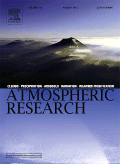
Atmospheric Research
Connecting Science and Climate for a Better TomorrowAtmospheric Research is a premier journal published by Elsevier Science Inc, specializing in the field of Atmospheric Science. With a commendable impact factor, it holds a distinguished position in the Scopus rankings, being placed 14th out of 148 journals within its category and achieving a remarkable 90th percentile rank. This journal serves as a vital outlet for rigorous research on atmospheric processes, climate variability, and meteorological phenomena, providing a platform for scientists, researchers, and students to disseminate their findings and contribute to the advancement of knowledge in this critical field. Although it is not an open-access journal, its strong reputation and selective publication criteria ensure that only high-quality and impactful studies are featured. Since its inception in 1986, Atmospheric Research has continuously evolved to meet the dynamic nature of atmospheric studies, making it a fundamental resource for anyone engaged in understanding and addressing atmospheric challenges worldwide.

Asian Journal of Atmospheric Environment
Shaping the Future of Atmospheric Research in AsiaAsian Journal of Atmospheric Environment, published by SPRINGERNATURE, is a renowned open-access journal established in 2007, dedicated to advancing research in the fields of Atmospheric Science and Environmental Science. With an ISSN of 1976-6912 and E-ISSN of 2287-1160, the journal aims to offer a platform for the dissemination of cutting-edge research findings, reviews, and innovative methodologies addressing critical environmental issues faced in Asian and global contexts. As of 2023, it holds a respectable Q3 ranking in both Atmospheric Science and Environmental Science categories, positioning itself within the competitive landscape of scholarly publications. The journal is indexed in Scopus and emphasizes its commitment to enhancing accessibility and widespread dissemination of knowledge, making significant contributions to environmental sustainability and atmospheric research. Researchers, professionals, and students are encouraged to engage with the journal as it continues to evolve through its converged years, providing a vital resource for exploring and addressing the challenges that shape our atmospheric environment.